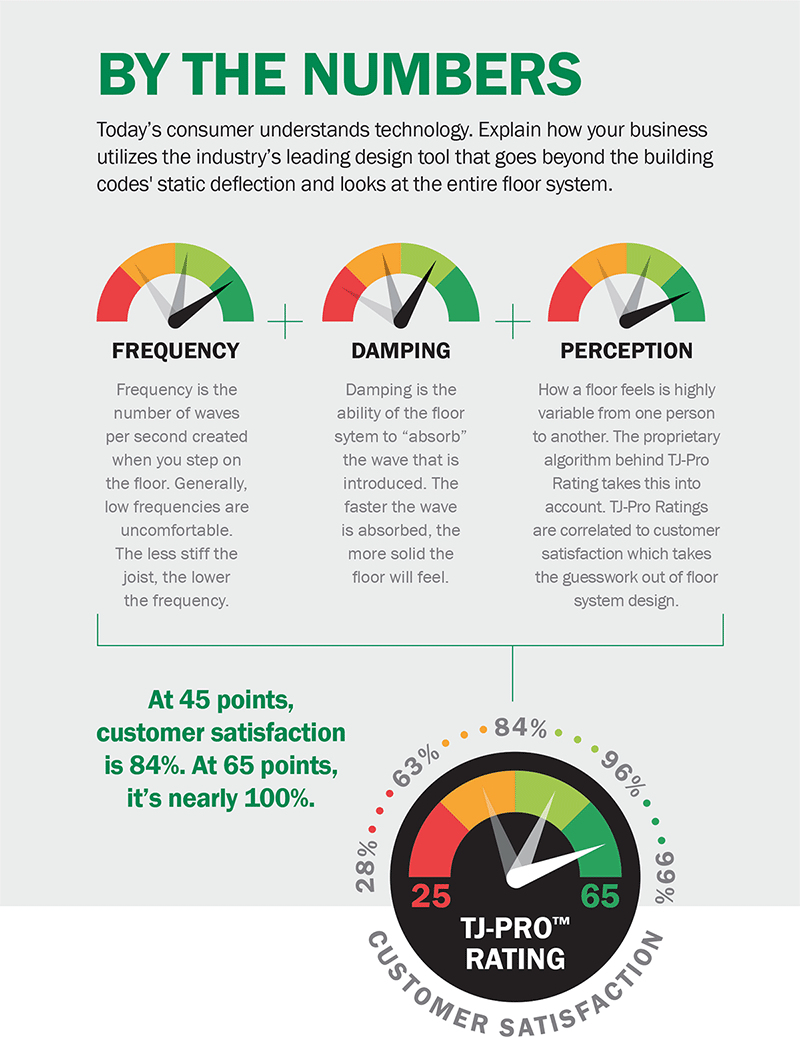
For more than 50 years, builders have looked to the Trus Joist® name for guidance on floor performance. Our decades of proven success with TJ-Pro™ Rating is one of the biggest reasons why.
Builders use TJ-Pro Rating to:
- Design Floors their customers expect
- Manage performance through purchase decisions
- Learn why span charts are not measures of performance or customer satisfaction
- Balance image, efficiency and financial goals
Where to find TJ-Pro Rating:

Talk to one of our Territory Managers to learn more about getting started with TJ Pro Rating
Decisions are made on one or a combination of three factors: efficiency, image and economy. Many variables affect customer satisfaction ratings, some of which include:

- Basic Stiffness is a combination of joist depths and span.
- Composite Action — Careful nailing in conjunction with construction adhesives increases basic stiffness.
- Continuity — Continuous joists over several supports generally perform better than simple spans. Care must be taken if the joists continue into another occupancy.
- Joist Spacing and Deck Stiffness —Reduced spacing or increased deck thickness generally improves floor performance.
- Ceilings directly applied to the bottom edge of the floor members, or equivalent 1x or 2x strapping, is a performance enhancement.
- Beams — Floor systems supported by steel or wood beams tend to feel less stiff than those supported by solid bearing walls.
- Bridging or Blocking can be a contributor to improved floor performance.
- Non-bearing Partition Walls dampen vibration and improve floor performance when installed transverse to the floor joists.
- Mass reduces damping in a floor system, causing a decrease in floor performance. This impact is more noticeable as span lengths increase.

Product Literature
- tb-104 - Information About Floor Performance
